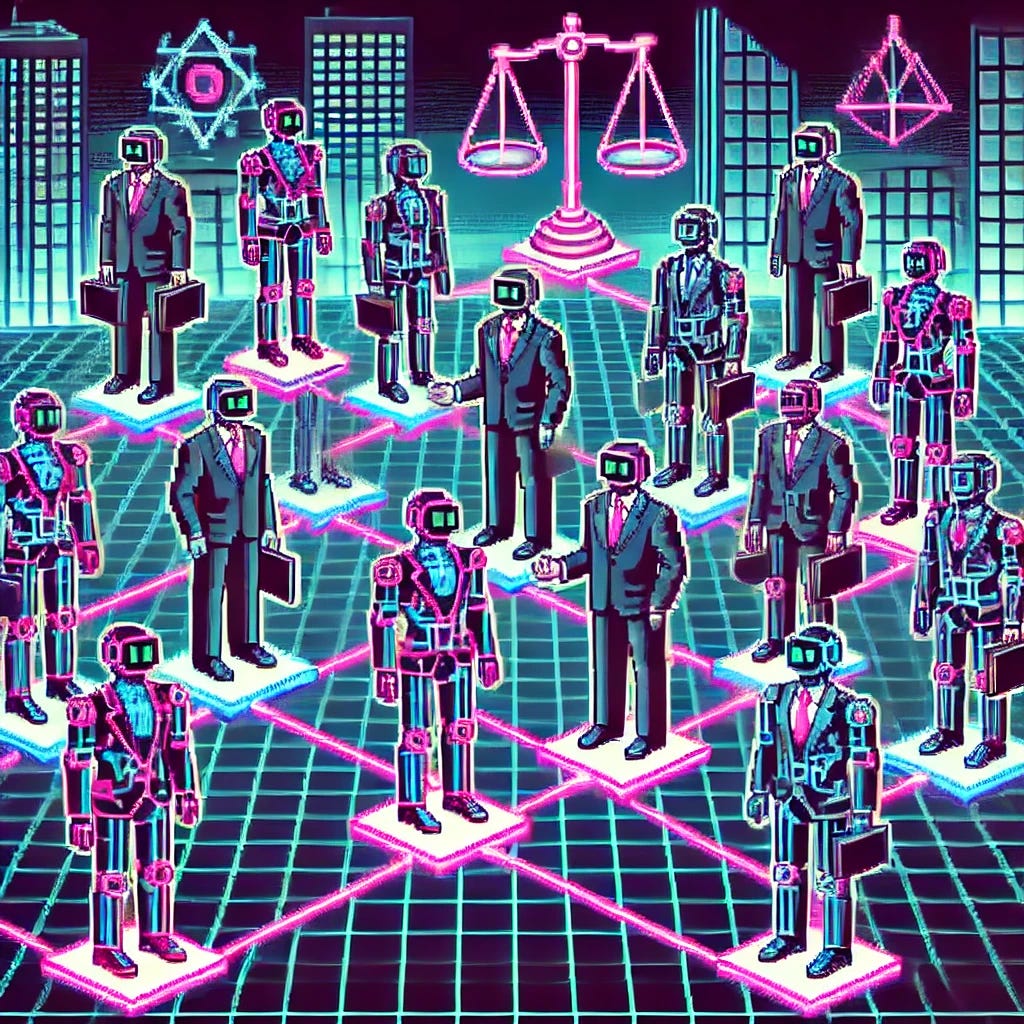Thurgood Ixian.tech Web3 Legal Externship Chronicles #3
Polycentric Emergent Tech Law
The juiciest steak this week was about Polycentric law, a theoretical legal structure in which "providers" of legal systems compete or overlap in a given jurisdiction. This is in contrast to monopolistic statutory law, according to which there is a sole provider of law for each jurisdiction. As a permaculture designer, I like this because the more diverse an ecosystem is, the healthier it is. To deal with all this chaos, we will need the help of emergent tech such as AI agents, decentralized ledgers, and “smart” devices. Legal engineers work with traditional legal systems to research, design, and upgrade the “code” for the highest and best good.
To connect all these dots, we are using “smart contracts” on the Hats protocol. This on-chain role system allows you to automate onboarding and manage permissions across the internet with programmable blockchain (the tech under the hood of Bitcoin, etc.) roles. It also connects to IPFS, a revolutionary protocol for decentralized data storage. It is pretty cool to work in this way, which is cutting-edge compared to our forebears' old ink and paper contracts.
These digital documents are electronically signed to mint an NFT (nonfungible token) that gives access to different roles for Lex.clinic. We were initially connected through LexDao’s Discord server. LexDao is a multi-jurisdictional non-profit association of legal engineers. Through LEXclinic, this externship opportunity was activated with xian.tech, so it was a pleasure to scrutinize their wallet-enabled gates to this project, which helps students (like me) learn the space by working on web3 social good projects such as the clinic itself (since it is in BETA). This externship is the first of its kind (as far as I know) at Thurgood Marshall Law School.
LEXClinic aims to teach lawyers and law students how to revise and markup these digital contracts in the version control known as “Github.” These are “adhesion” contracts, which don’t require negotiation. Even though this seems complicated to the novice, in the same way, an automobile mechanic shop’s tools might not have made sense to a “horse and buggy” shop at the turn of the last century.”
The training for this week was: “Emergent Technologies & Legal Frameworks.”
Example of Framework issues:
“In the US, states have different definitions of smart contracts (they do), which complicates things and burdens entrepreneurs. They should be defined as event-driven programs, not transactions.” -Ramona Tudorancea ( supervising attorney NY)
Chat GPT project: Review all the legal definitions here and generate a consolidated master definition.
Chatgpt synthesized the definitions and came up with this:
“A smart contract is an event-driven program that executes on a distributed, decentralized, shared, and replicated ledger (such as blockchain), automating transactions and enforceable actions based on predefined conditions. It serves as both a legal and automated mechanism for executing, verifying, and enforcing contractual terms without the need for intermediaries.”
Examples of application of Smart Contracts:
Insurance:
https://www.scnsoft.com/insurance/smart-contracts
Property
propy = title https://propy.com/browse/propytitle/
What is good law?
As with most things, you will know it by the fruit. It is still the beginning, so much research is needed. Consider supporting this ecosystem. Here are some ways.
Follow our adventures if you feel called to connect, collaborate, and/or accelerate your Web3 social good project.
Article 1 International Arbitration Conference
Article 2 Lex Mercatoria Web3
Twitter: @lexlaunchpad
Have a social good web3 project to launch?












